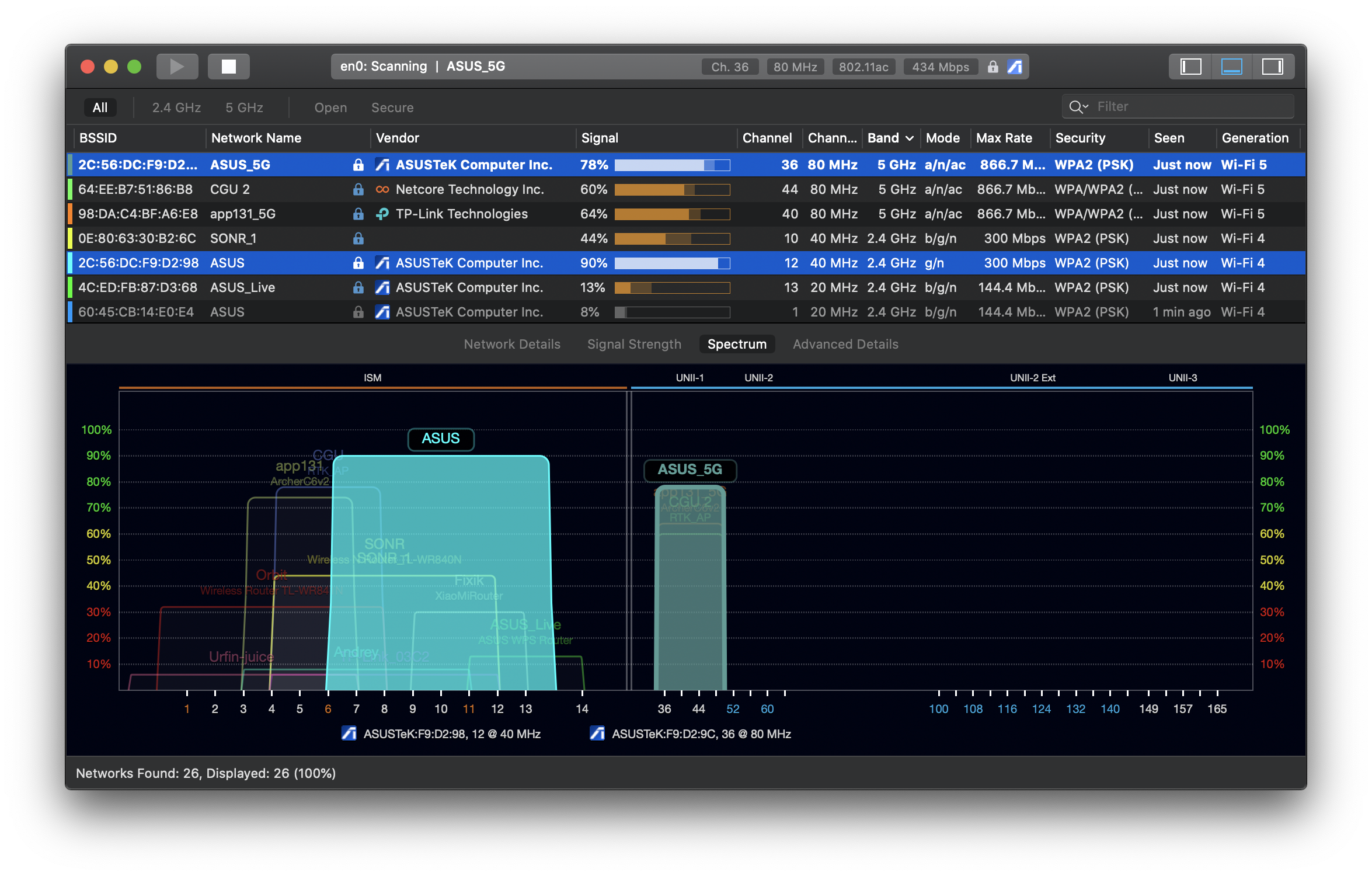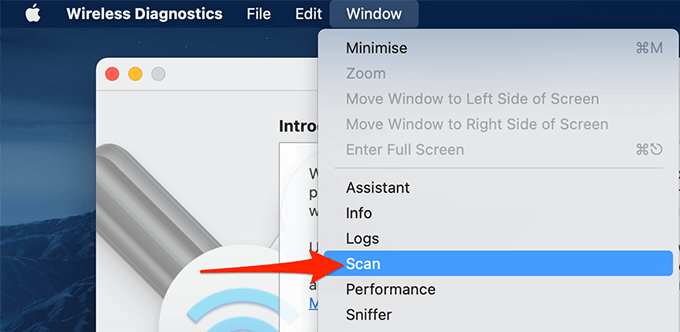

- #How to scan wifi channels mac how to
- #How to scan wifi channels mac install
- #How to scan wifi channels mac mac

#How to scan wifi channels mac mac
Display detailed information for wireless network: network name (SSID), signal level (RSSI), MAC address (BSSID), signal quality, channel, achievable and maximum data rate, encryption, channel utilization, clients etc.Support for 20, 40, 80, 160 and 80+80 MHz channel widths.Support for 2.4 and 5 GHz frequency bands.Looking for a more advanced WiFi scanner with extra features? Check out Kismet, a command line tool that got a web UI back in April, 2019. To scan for available WiFi networks press F3 to switch to the scan tab. Arch Linux / Manjaro: sudo pacman -S wavemon.
#How to scan wifi channels mac install
Debian, Ubuntu, Linux Mint, Pop!_OS, Elementary OS and other Debian or Ubuntu based Linux distributions: sudo apt install wavemon.Wavemon is not installed by default, but it's available in the repositories for many Linux distributions. Wavemon can show the following information for available (scanned) WiFi networks: SSID, BSSID (access point mac address), signal quality, signal strength, WiFi channel, and frequency. run it with sudo) to scan for available Wifi networks by default. The tool requires super user permissions (e.g. Using it you can get a list of available Wifi access points, regardless if you're connected to a WiFi network or not. Use this instead of nmcli, if you're not using NetworkManager, or if you simply prefer this over nmcli. Wavemon is terminal user interface (TUI) that uses ncurses, which monitors wireless signal and noise levels, packet statistics, device configuration and network parameters. Use nmcli to show the available wireless networks SSID, mode, channel, transfer rate, signal strength, bars and security used using:

This should already be installed on your Linux distribution, it doesn't require specifying the interface name, and can work without super user (sudo) privileges by default or at least that's the case in my test on both Fedora and Ubuntu.

Nmcli, a command line tool for controlling and reporting the network status, can scan and list available WiFi networks regardless of the WiFi being connected to a network or not. Option #1: Scan and list available WiFi networks using nmcli There are multiple ways / tools to scan for available WiFi networks and list their details, but in this article I'll only list 2 which are easy to use and provide enough information for this task. This can be useful to scan available WiFi networks to quickly see their signal strength, see their channels to know which WiFi channel to use for less interference, and so on.
#How to scan wifi channels mac how to
This article explains how to view available WiFi networks, list their channels, link quality, security, signal strength, and more on Linux using the command line.


 0 kommentar(er)
0 kommentar(er)
